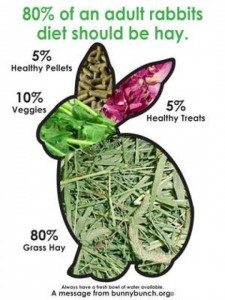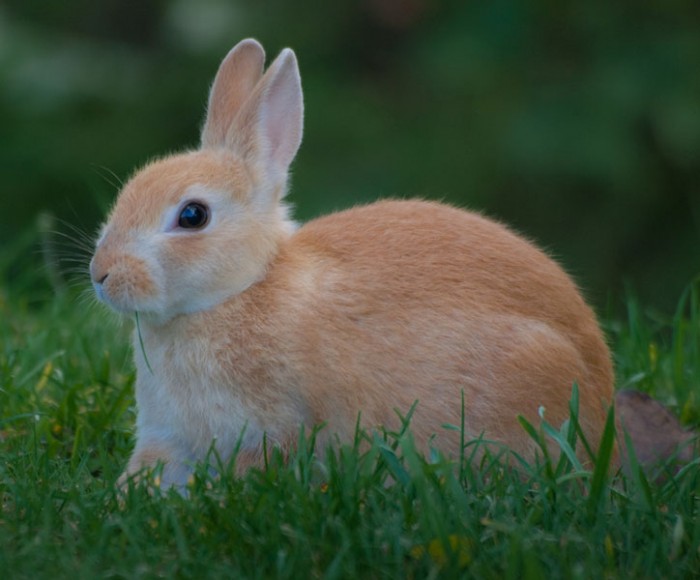Rabbit:
Bunnies are little well evolved creatures in the family Leporidae, tracked down in different regions of the planet. Here are a few insights concerning them:
1. **Physical Characteristics**: Bunnies commonly have long ears, short tails, areas of strength for and appendages intended for quick running and bouncing. They come in different tones and examples, contingent upon the species and breed.
2. **Habitat**: Hares are versatile animals and can be tracked down in different living spaces, including timberlands, prairies, deserts, and wetlands. They frequently dig tunnels to live in, giving safe house from hunters and outrageous atmospheric conditions.
3. **Diet**: Hares are herbivores, essentially benefiting from grasses, clover, and other verdant plants. They have an exceptional stomach related framework that permits them to separate greatest sustenance from cellulose-rich plant material.
4. **Behavior**: Hares are social creatures that live in bunches called provinces or warrens. They convey through non-verbal communication, vocalizations, and aroma stamping. They are crepuscular, meaning they are generally dynamic during first light and sunset.
5. **Reproduction**: Bunnies are known for their high regenerative rates. Female hares are called does, and they can deliver numerous litters of posterity every year. Child hares, called packs or cats, are conceived bare and dazzle, however they develop quickly and are weaned inside half a month.
6. **Domestication**: Bunnies have been tamed for a really long time, fundamentally for their meat, fur, and as pets. Homegrown bunnies come in different varieties, each with its own special qualities as far as size, fur type, and demeanor.
7. **Ecological Importance**: Hares assume significant parts in environments as prey creatures, giving food to hunters like foxes, falcons, and snakes. They likewise add to supplement going through their brushing propensities and tunneling exercises.
8. **Conservation**: While some bunny species are plentiful and far and wide, others are undermined or jeopardized because of environment misfortune, predation, and infections like myxomatosis and hare hemorrhagic illness (RHD).
Generally speaking, bunnies are captivating animals with different transformations that permit them to flourish in a wide reach
Diet of rabbit:
Hares are herbivores, and that implies their eating routine comprises altogether of plant material. Here is a nitty gritty breakdown of what hares commonly eat:
1. **Hay**: Great feed, for example, timothy, plantation grass, or hay, shapes the premise of a hare’s eating routine. Feed gives fundamental fiber, which is pivotal for keeping up with stomach related wellbeing. It likewise helps wear out a bunny’s consistently developing teeth.
2. **Fresh Vegetables**: Hares ought to likewise be taken care of various new vegetables day to day. A few models incorporate dull salad greens like kale, spinach, and romaine lettuce, as well as carrots, celery, chime peppers, and broccoli. These vegetables give fundamental nutrients and minerals.
3. **Herbs**: Hares partake in various spices, like parsley, cilantro, basil, and mint. These can be given as treats and furthermore give extra supplements and assortment in their eating regimen.
4. **Pellets**: Pellets figured out explicitly for hares can be given with some restraint. Search for high-fiber pellets without added sugars or fake tones. Pellets ought to make up a more modest part of a hare’s eating regimen contrasted with feed and new vegetables.
5. **Limited Fruit**: Organic product ought to be given sparingly as treats because of their high sugar content. Modest quantities of natural products like apples, strawberries, and bananas can be offered periodically as an exceptional treat.
6. **Water**: New, clean water ought to be accessible to bunnies consistently. Water containers or bowls can be utilized, however bottles are frequently liked to forestall spills and defilement.
7. **Avoid:** – **High Starch and Sweet Foods**: Food varieties high in starch and sugar, like bread, wafers, and sweet treats, ought to be stayed away from as they can disturb a hare’s sensitive stomach related framework.
– **Cabbage and Brussels Sprouts**: While certain vegetables are good for bunnies, cabbage and Brussels fledglings can cause gas and stomach related issues in certain hares and are best kept away from.
– **Chunk of ice Lettuce**: Icy mass lettuce has minimal healthy benefit and can cause looseness of the bowels in hares. It’s ideal to adhere to hazier, salad greens like romaine lettuce or kale
It’s critical to present new food varieties bit by bit and screen your bunny for any indications of stomach related upset. A decent eating routine is fundamental for keeping a hare’s general wellbeing and prosperity. Moreover, giving a lot of new roughage, admittance to clean water, and standard veterinary check-ups are fundamental for guaranteeing a cheerful and sound bunny.
Which the environment rabbit like to live:
Bunnies are versatile animals that can be tracked down in various conditions, yet they for the most part favor territories that offer the accompanying attributes:
1. **
Cover and Shelter**: Bunnies favor natural surroundings with more than adequate cover and haven to stow away from hunters and outrageous weather patterns. This might incorporate thick vegetation, brushy regions, or tunnels dove into the ground.
2. **Open Spaces**: While they need cover for security, bunnies additionally lean toward natural surroundings with open spaces where they can touch and rummage for food. Prairies, glades, and fields are ideal conditions for hares.
3. **Access to Water**: In spite of the fact that hares can get dampness from the plants they eat, they actually expect admittance to water for drinking. Environments close to streams, streams, lakes, or other water sources are liked.
4. **Low Disturbance**: Bunnies are delicate to aggravations and may keep away from regions with regular human movement or different unsettling influences, for example, boisterous commotions or predation pressure.
5. **Variety of Vegetation**: A different scope of vegetation furnishes bunnies with various food choices and helps meet their dietary requirements. Living spaces with a blend of grasses, spices, bushes, and other plant species are great.
6. **Burrowing Opportunities**: Many bunny species are burrowers and will search out living spaces where they can dig tunnels for cover and settling. Sandy or free soil is helpful for tunneling.
7. **Minimal Predation Pressure**: While bunnies have developed different variations to stay away from hunters, they favor territories with somewhat low predation pressure. Natural surroundings with bountiful cover and less hunters might be more alluring to hares.
Generally, bunnies are profoundly versatile and can flourish in a scope of conditions, including meadows, backwoods, deserts, and wetlands, as long as they give reasonable cover, food, water, and security from hunters.
Rabbit shelter:
Giving fitting haven to bunnies is fundamental for their prosperity, whether they are homegrown pets or residing in open air provinces. Here are a few contemplations for bunny cover:
1. **Indoor Lodging for Pet Rabbits**:
– A huge enclosure or nook ought to be given inside, ideally in a peaceful region of the home.
– The nook ought to be sufficiently extensive to permit the bunny to bounce around, stretch, and stand up on their rear legs.
– Bedding material like roughage, straw, or paper-based sheet material ought to be accommodated solace and to assimilate squander.
– Hares need potential open doors for work out, so giving a different region or playpen where they can bounce around beyond the enclosure is gainful.
– Guarantee the nook is resistant to hunter and liberated from risks like electrical strings, harmful plants, or little things that bunnies could ingest.
2. **Outdoor Lodging for Pet Rabbits**:
– Assuming that hares are kept outside, they actually require insurance from the components and hunters.
– A strong cubby or haven with a strong rooftop to give shade and security from downpour and wind is fundamental.
– The cubby ought to be raised off the ground to forestall dampness development and possible flooding.
– Give a strong floor or stage to shield bunnies’ feet from wire network flooring, which can cause injury.
– Protect the cubby during colder months and give additional sheet material to warmth.
– Guarantee the cubby is safely locked around evening time to keep hunters from getting to the hares.
3. **Wild Bunny Shelter**:
– Wild bunnies frequently make tunnels or warrens in the ground for cover.
– Tunnels give assurance from hunters, outrageous climate, and temperature variances.
– The entry to the tunnel is commonly covered up and might be situated in thick vegetation or under brush heaps.
– Wild hares may likewise look for cover under designs like sheds, decks, or deserted structures.
4. **Emergency Shelters**:
– In instances of outrageous climate occasions or crises, giving transitory haven to rabbits is significant.
– A durable cardboard box or plastic transporter fixed with bedding material can act as a brief haven inside
– Guarantee the sanctuary is situated in a protected, calm region away from possible dangers.
In general, giving suitable sanctuary is essential to the wellbeing and security of hares, whether they are homegrown pets or wild creatures. Haven ought to offer assurance from the components, hunters, and other possible dangers while permitting hares to display regular ways of behaving and have a solid sense of safety.
Kinds of Rabbit:
Hares have a place with the family Leporidae, which incorporates different species and subspecies. Here are probably the most notable sorts of bunnies, alongside insights concerning each:
1. **European Hare (Oryctolagus cuniculus)**:
– The European hare is the species from which homegrown bunnies are inferred.
– Local to southwestern Europe and northwest Africa, it has been acquainted with numerous different areas of the planet.
– European bunnies ordinarily have grayish-earthy colored fur with lighter undersides. They are social creatures that live in settlements called warrens.
2. **Eastern Cottontail (Sylvilagus floridanus)**:
– Local to North America, the Eastern cottontail is one of the most well-known hare species in the US.
– It has an earthy dark fur garment with an unmistakable white cotton-like tail, which gives it its name.
– Eastern cottontails are fundamentally nighttime and singular, frequently concealing in bushes and brushy regions during the day
.
3. **
European Rabbit (Lepus europaeus)**:
– Albeit comparable in appearance to bunnies, rabbits have a place with an alternate sort inside the Leporidae family.
– The European rabbit is found all through Europe and portions of Asia and Africa.
– It has longer legs and ears contrasted with hares, as well as a bigger body size. Its fur is regularly brown or dim.
4. **Snowshoe Rabbit (Lepus americanus)**:
– Found in North America, the snowshoe rabbit is named for its enormous, shaggy rear feet that carry on like snowshoes, empowering it to move effectively over snow.
– Its fur changes tone with the seasons, becoming white in the colder time of year for disguise and brown in the late spring.
– Snowshoe bunnies are principally nighttime and feed on an assortment of plant material.
5. **Pygmy Bunny (Brachylagus idahoensis)**:
– The dwarf bunny is the littlest hare species in North America and one of the littlest on the planet.
– It is tracked down in the western US, essentially in sagebrush territories.
– Dwarf bunnies have short ears and a grayish-earthy colored fur garment. They are social creatures that live in little gatherings.
6. **
Brush Bunny (Sylvilagus bachmani)**:
– Local toward the western US and Mexico, the brush bunny is named for its inclination for brushy environments.
– It has a grayish-earthy colored fur garment with a white underside. Like different cottontails, it has an unmistakable white tail.
– Brush hares are fundamentally nighttime and feed on an assortment of plant material, including grasses and spices.
These are only a couple of instances of the numerous species and subspecies of hares viewed as around the world. Every species has its own extraordinary qualities, environment inclinations, and ways of behaving


